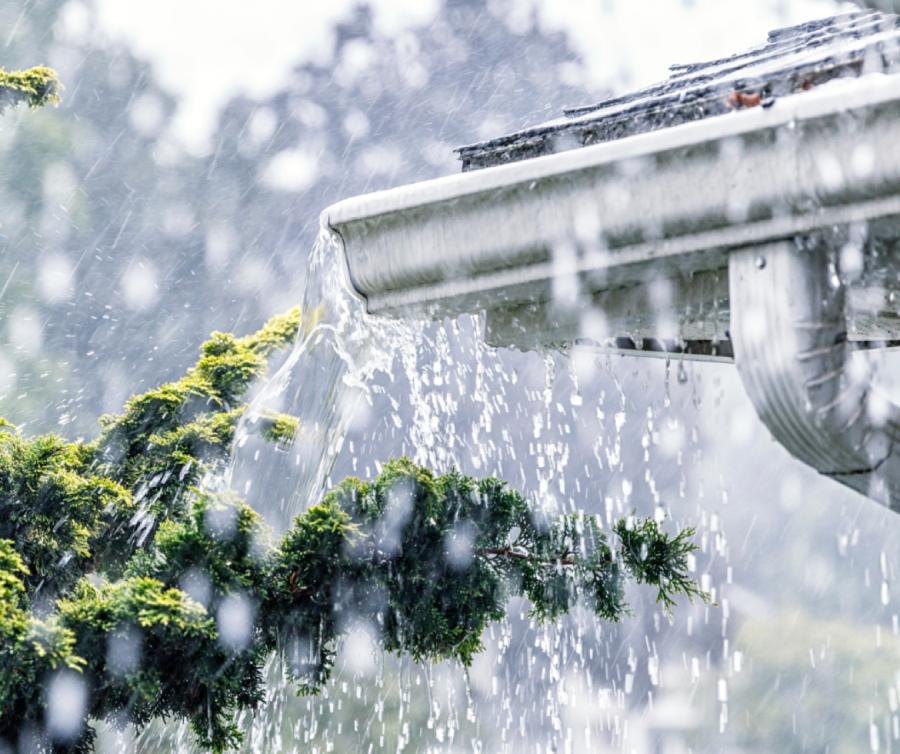Hail Damage Myths That Cost Homeowners Money
Hailstorms move fast—and so do the myths that follow them. Believing the wrong thing can delay repairs, void warranties, or shrink your insurance payout. Here’s what to know.
Myth #1: “If I can’t see damage from the ground, I’m fine.”
Granule loss, bruised shingles, and micro‐cracks aren’t obvious from the driveway. A trained inspector checks shingles up close, plus soft metals (vents, flashings, gutters) that show hail impact more clearly.
Myth #2: “No leak = no damage.”
Leaks can take months to show. Bruised shingles and cracked seals let water in slowly, leading to rot, mold, or interior stains later—often after claim deadlines pass.
Myth #3: “My neighbors are fine, so I’m fine.”
Hail falls in narrow streaks. One block can get pea-sized hail; the next, golf balls. Your roof needs its own inspection and documentation.
Myth #4: “Photos are enough for an assessment.”
Pictures help, but an in-person inspection is what confirms bruising, soft metal strikes, torn seals, and compromised flashing—especially on high slopes and ridges.
Myth #5: “I’ll wait and file one big claim later.”
Most policies have time limits to file (often 6–12 months). Waiting risks denial, additional damage, and higher out-of-pocket costs.
Myth #6: “Insurance covers any hail issue.”
Policies exclude wear-and-tear and pre-existing problems. You need clear evidence that storm impact caused the damage—not age, poor ventilation, or past neglect.
Myth #7: “A quick patch is as good as a system repair.”
Mixing old and new shingles can cause color mismatch and void manufacturer warranties. If impact is widespread, a full slope or roof replacement is often the right fix.
Myth #8: “Hail only hurts shingles.”
Hail also dings gutters/downspouts, cracks pipe boots, dents ridge vents, loosens flashing, and crushes A/C fins. Miss these and you’ll keep chasing leaks.
Myth #9: “Any contractor can meet my adjuster.”
You want a licensed, insured, local roofer who documents damages, meets the adjuster on-site, and handles supplements if hidden issues appear.
What to do after a hailstorm
- Stay safe. Watch for loose shingles or downed power lines.
- Take quick photos of yard and exterior while evidence is fresh.
- Book a professional roof inspection to confirm damage and create a report.
- File your claim (if the inspection supports it) and schedule the adjuster meeting.
- Temporary protection (tarping/spot sealing) if needed to prevent further damage.
Bottom line: Fast, professional documentation protects your home and your claim. If you’re in GA, TN, AL, SC, or IA, Universal Roofing & Construction can inspect, document, meet your adjuster, and get you watertight quickly.
Siding or Roof First: A Guide to Prioritizing Repairs After a Storm
Severe storms in the Midwest can leave homeowners facing significant damage to their properties. The high winds, hail, and torrential rain typical of these storms can wreak havoc on the structural integrity of homes.
After such events, homeowners often find themselves in a quandary, trying to decide whether to prioritize siding replacement or roof repairs. The aftermath can be overwhelming, with visible and sometimes hidden damages that could compromise the safety and comfort of your home.
This guide aims to help homeowners make informed decisions about which exterior repairs to tackle first after a storm.
Assessing Storm Damage
Inspect Your Property
After a storm, the first step is to inspect your property for visible damage. Begin by taking a cautious walk around your home, looking for signs of damage such as missing shingles, dents in the siding, or fallen debris. Pay particular attention to areas where water might pool or where branches and other debris might have struck your home.
Professional inspectors can identify subtle signs of damage that might go unnoticed, such as hairline fractures in shingles or slight misalignments in siding panels. They can also assess the overall structural integrity of your roof and siding, providing you with a detailed report of the condition of your home’s exterior. This report can serve as a valuable tool when discussing repair options with contractors or when filing an insurance claim.
Document the Damage
It's important to document any damage you find. Take clear photos and notes of the affected areas to provide to your insurance company and contractors. Ensure your documentation is thorough, capturing wide shots of the affected areas and close-ups of specific damage. This documentation will be crucial when filing a claim or discussing repairs, as it provides a clear record of the storm’s impact on your home.
Understanding the Importance of Roof Repairs
The Roof as the First Line of Defense
Your roof is your home's primary defense against the elements. It protects the interior from rain, snow, and wind, acting as a crucial barrier that preserves the structural integrity of your home. Any damage to the roof can lead to leaks and further structural issues, making roof repairs a top priority. A compromised roof can allow water to infiltrate, causing damage to insulation, electrical systems, and even the foundation if left unchecked.
The importance of a well-maintained roof cannot be overstated. It not only protects your home but also contributes to energy efficiency by maintaining a stable internal temperature. Investing in timely roof repairs can prevent more extensive damage and expensive repairs in the future, ensuring longevity and home value.
Signs You Need Roof Repairs
- Missing or Damaged Shingles: Shingles protect your roof's underlayment, so missing or damaged ones can expose your home to water damage. Missing shingles are often the most visible sign of damage and should be addressed immediately to prevent leaks.
- Leaks or Water Stains: Water stains on your ceiling or walls are clear indicators of roof leaks. These stains can lead to mold growth and structural damage if not promptly addressed.
- Sagging Roof Deck: If the roof deck appears saggy, it could be a sign of structural damage needing immediate attention. A sagging roof can indicate problems with the roof's support system, which could lead to a collapse if not repaired.
Roof Maintenance Tips
Regular maintenance can prevent future storm damage. Here are some tips:
- Inspect Regularly: Have a professional inspect your roof at least once a year. Regular inspections can catch small issues before they become significant problems, saving you money in the long run.
- Clean Gutters: Ensure gutters are clear of debris to prevent water buildup. Clogged gutters can lead to water overflow, which can damage your roof and siding.
- Trim Branches: Reduce the risk of branches falling on your roof during storms. Overhanging branches can not only damage your roof but also provide a pathway for pests to enter your home.
The Role of Siding in Home Protection
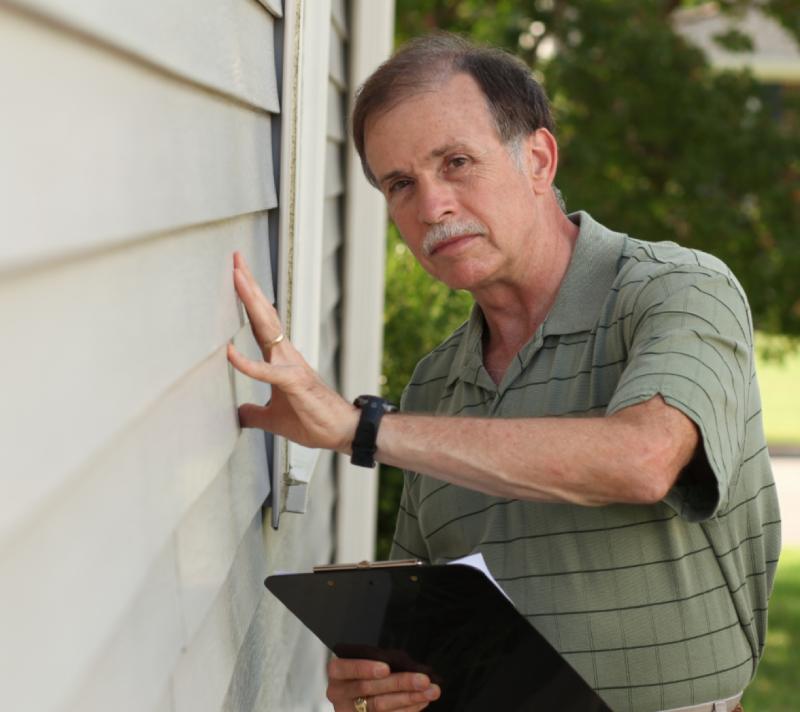
Siding's Protective Function
Siding not only enhances your home's curb appeal but also serves as a protective barrier against harsh weather. It insulates your home and protects it from moisture, pests, and temperature fluctuations. Good siding acts as a shield, preserving the integrity of your home's frame and contributing to energy efficiency by maintaining consistent indoor temperatures.
The aesthetic appeal of siding should not be underestimated. Quality siding can increase the value of your home, making it more attractive to potential buyers. However, its primary function is protection, and ensuring your siding is in good condition is essential for maintaining the overall health of your home.
When to Consider Siding Replacement
- Cracks or Holes: These can allow moisture and pests to enter your home. Even small cracks can lead to significant damage over time if not repaired.
- Warping or Bubbling: Indicates water damage and potential for mold growth. Warped siding can compromise the structural integrity of your home's exterior and should be addressed promptly.
- Faded or Peeling Paint: While more cosmetic, it can indicate the siding's protective layer is compromised. Peeling paint can expose the underlying material to the elements, accelerating deterioration.
Siding Replacement Options
When replacing siding, consider materials that offer durability and weather resistance, such as vinyl, fiber cement, or engineered wood. These materials are designed to withstand harsh weather conditions and provide long-lasting protection for your home. Vinyl siding is a popular choice due to its affordability and low maintenance requirements, while fiber cement offers excellent durability and resistance to fire and pests. Engineered wood provides a natural look with enhanced durability and weather resistance.
Selecting the right material for your siding replacement involves considering factors such as climate, budget, and personal preference. Consulting with a professional can help you choose the best option for your home, ensuring that your siding not only looks great but also provides the necessary protection.
Siding vs. Roof Repairs: Which Comes First?
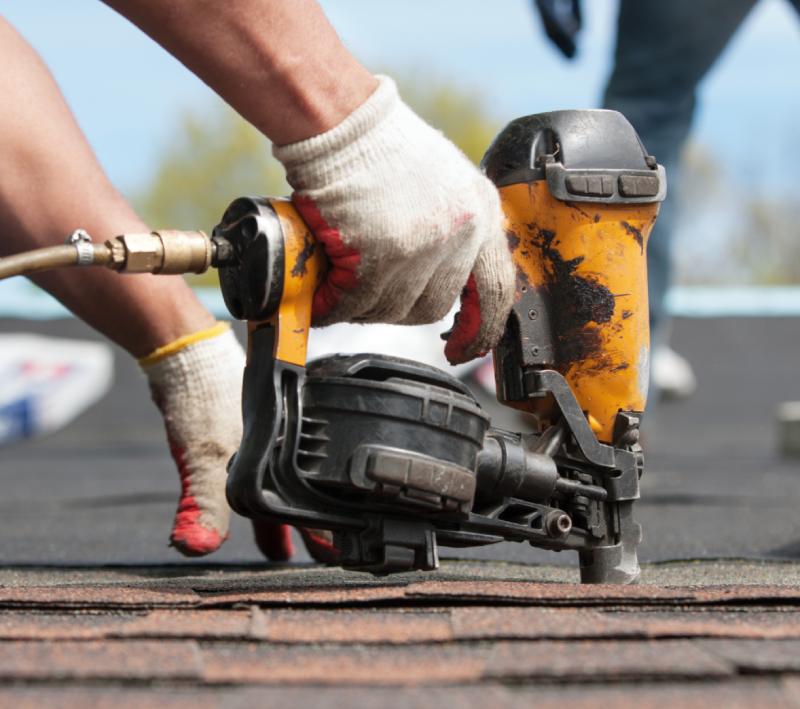
Prioritizing Based on Damage Severity
The decision between siding vs. roof repairs depends largely on the severity of the damage. If the roof is leaking or structurally compromised, it should take precedence. Roof issues can lead to interior damage, including mold growth and compromised insulation.
However, if both the roof and siding are equally damaged, consulting with a roofing contractor can provide clarity. They can assess the urgency of each repair and help you prioritize based on potential risks and costs.
In some cases, addressing both issues simultaneously might be the best course of action. A comprehensive approach can prevent small problems from escalating and ensure that your home is fully protected from future storms.
Cost and Budget Considerations
Budget constraints may also influence your decision. Roof repairs can be more costly, but addressing roof issues early can prevent more expensive problems later. Investing in roof repairs now can save you money in the long run by avoiding extensive interior damage and structural repairs.
Siding repairs might be more affordable, but ignoring them could lead to increased utility bills and interior damage. Proper insulation and protection provided by siding can significantly impact your home's energy efficiency, leading to savings on heating and cooling costs.
It's essential to weigh the costs and benefits of each repair option carefully. Consulting with contractors and reviewing your budget can help you make informed decisions that align with your financial situation and long-term home maintenance goals.
Working with Roofing Contractors
Choosing the Right Contractor
When selecting a contractor, consider these tips:
- Check Credentials: Ensure the contractor is licensed and insured. Proper credentials indicate professionalism and reliability.
- Read Reviews: Look for testimonials from other homeowners. Customer feedback can provide insight into the contractor's quality of work and customer service.
- Get Multiple Quotes: Compare prices and services offered. Multiple quotes allow you to evaluate your options and choose a contractor that offers the best value.
A reliable contractor can make a significant difference in the quality and longevity of your repairs. Take the time to research and select a contractor who meets your needs and expectations.
Questions to Ask
- What is the estimated timeline for repairs? Understanding the timeline can help you plan and manage your expectations.
- Are there warranties or guarantees on the work? Warranties provide peace of mind and protect your investment.
- What materials are recommended for my home? A knowledgeable contractor can recommend materials that suit your home’s specific needs and climate.
Asking the right questions can help you gauge the contractor's expertise and ensure that your repair project is in capable hands.
Conclusion
Deciding whether to prioritize siding or roof repairs after a Midwest storm can be challenging. By assessing the damage, understanding the importance of each repair, and consulting with professional roofing contractors, you can make informed decisions that protect your home and ensure its longevity. Remember to maintain regular upkeep to minimize future storm damage and safeguard your investment. Proactive maintenance and timely repairs can save you time, money, and stress in the long run, ensuring your home remains a safe and comfortable haven for years.
For expert siding and roofing services in the Clive area, contact our team at Universal Roofing and Construction today!
Protecting Your Roof from Midwest Summer Storms
As the summer months approach, residents of Des Moines are no strangers to the challenges posed by Midwest storms. These storms can bring heavy rain, strong winds, hail, and even tornadoes, all of which can wreak havoc on your roof. To protect your home and ensure your safety, it's crucial to prepare your roof for the severe weather ahead. Being proactive not only safeguards your property but also provides peace of mind during a storm's unpredictability.
This article will guide you through essential steps to safeguard your roof from potential storm damage.
Understanding the Risks of Midwest Storms
Before diving into protective measures, it's essential to understand the risks that Midwest storms pose to your roof. These storms can cause:
- Wind Damage: High winds can lift shingles, break tree branches, and cause debris to hit your roof. This can lead to immediate structural vulnerabilities, leaving your home exposed to subsequent weather events.
- Hail Damage: Hailstones can crack or puncture shingles, leading to leaks. These impacts can be severe, depending on the size and speed of the hailstones, potentially causing significant wear and tear that might necessitate immediate repair or replacement. Understanding the potential for hail damage can help you choose the right materials to withstand such impacts.
- Water Damage: Heavy rain can exploit existing weaknesses, causing leaks and water damage. Water infiltration can lead to mold growth, affecting the air quality inside your home, posing health risks to your family. The cumulative effect of water damage can also lead to costly repairs if not addressed immediately.
- Tornado Damage: While less common, tornadoes can cause catastrophic damage to roofs. The sheer force of a tornado can strip a roof entirely, rendering your home defenseless against the elements. Preparing for such extremes might seem daunting, but understanding the risks helps in planning effective prevention strategies.
With these risks in mind, let's explore how you can fortify your roof against the elements and minimize potential damage.
Regular Roof Inspections
One of the most effective ways to protect your roof is through regular inspections. By identifying and addressing potential issues early, you can prevent minor problems from becoming major headaches. Consistent inspections also allow for timely interventions that can extend the lifespan of your roofing system.
Schedule Professional Inspections
Hiring a professional roofing contractor is recommended for thorough inspections. An expert can spot signs of wear and tear, damaged shingles, and other vulnerabilities that may not be visible to the untrained eye. Professionals use specialized tools and techniques to assess the condition of your roof comprehensively. Aim for at least two inspections per year—one in the spring and another in the fall—ensuring your roof is prepared for varying weather conditions throughout the year.
DIY Inspections
If you prefer to inspect your roof yourself, here are some key areas to focus on:
- Shingles: Look for missing, cracked, or curled shingles. These can be entry points for water and pests, leading to more severe damage if left unchecked.
- Flashing: Check around chimneys, vents, and skylights for any signs of damage or leaks. Flashing is crucial for sealing these areas against water intrusion.
- Gutters: Ensure gutters are clear of debris and securely attached. Properly functioning gutters help prevent water accumulation on your roof.
- Attic: Examine your attic for signs of water damage or leaks. The attic can reveal issues not immediately visible from the roof's exterior.
Reinforce Your Roof
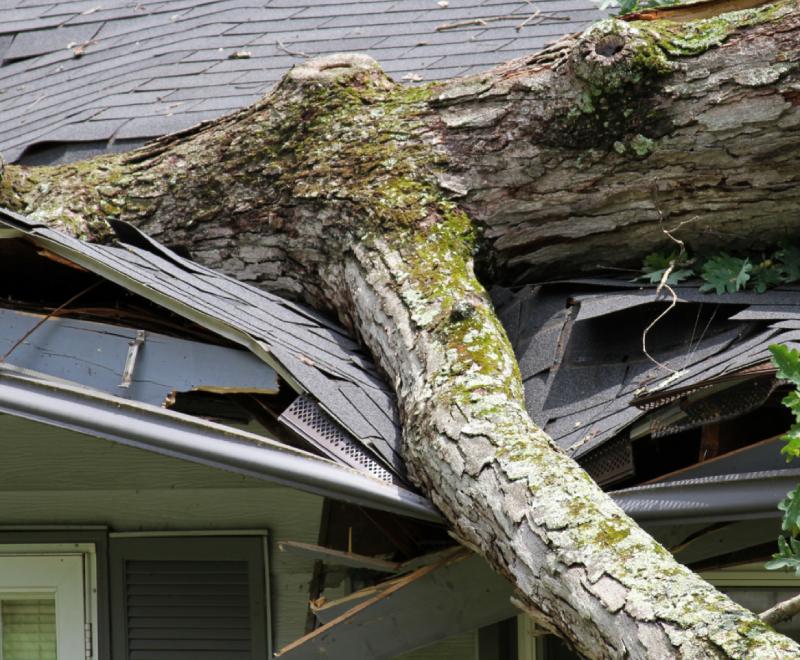
Once you've identified any issues, it's time to take action. Reinforcing your roof can significantly enhance its ability to withstand severe weather. Proactive measures can save you time, money, and stress when storms inevitably occur.
Repair or Replace Shingles
Damaged shingles are a weak point in your roof's defense against storms. Repair or replace any compromised shingles to maintain a solid barrier against the elements. Opting for high-quality materials can provide better protection and longer durability.
If your roof is older or has extensive damage, consider a full roof replacement to ensure maximum protection. A new roof can increase your home's value and energy efficiency, making it a worthwhile investment.
Upgrade to Weatherproof Materials
Consider upgrading to weatherproof roofing materials designed to withstand extreme conditions. Options like impact-resistant shingles or metal roofing can offer superior protection against hail and wind damage. These materials are specifically engineered to provide durability and resilience against the harshest weather conditions. Consult a roofing company to explore the best materials for your home, taking into account factors such as climate, budget, and aesthetic preferences.
Secure Loose Objects
High winds can turn everyday objects into dangerous projectiles. Secure loose items around your home, such as patio furniture, grills, and garden tools. This simple step can prevent damage to your roof and the rest of your property. Ensuring these items are properly stored or anchored can reduce the risk of them becoming hazards during a storm.
Maintain Your Gutters
Properly functioning gutters are crucial for directing water away from your home and preventing roof leaks. Ensure your gutters are clean, in good condition, and securely attached. Well-maintained gutters can prevent a host of water-related problems, from roof leaks to foundation damage.
Regular Cleaning
Remove leaves, twigs, and debris from your gutters regularly to prevent clogs. Clogged gutters can cause water to overflow, potentially damaging your roof, siding, and foundation. Regular cleaning is a simple yet effective way to ensure that water flows away from your home as intended.
Inspect and Repair
Check for any signs of rust, sagging, or separation in your gutters. Rust and deterioration can compromise the effectiveness of your gutters, leading to leaks and water damage. Repair or replace damaged sections to ensure they effectively channel water away from your home. Prompt repairs can save you from more significant issues down the line.
Prepare for Post-Storm Damage
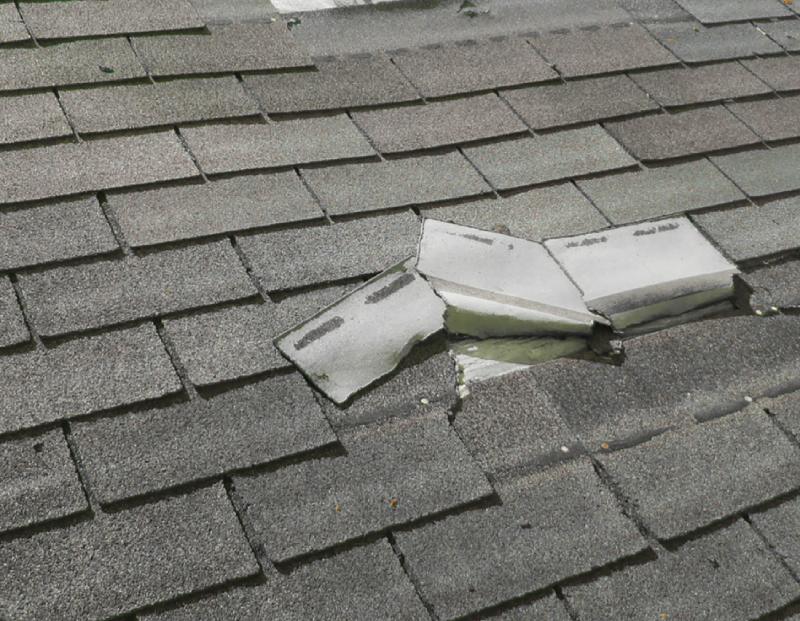
Despite your best efforts, storm damage can still occur. Being prepared for post-storm damage can help you respond quickly and minimize further issues. A well-thought-out plan ensures that you're ready to tackle any problems that arise, reducing stress and recovery time.
Know Your Insurance Policy
Review your homeowner's insurance policy to understand your coverage for storm-related damage. Having a clear understanding of your policy will make the claims process smoother if you need to file a claim. Knowing what is covered and what isn't can save you time and frustration in the aftermath of a storm.
Have a Roofing Contractor on Standby
Establish a relationship with a trusted roofing contractor in advance. Having a reliable professional on standby can expedite repairs and give you peace of mind after a storm. Pre-existing relationships can often lead to quicker response times and more favorable service terms.
Document Any Damage
If your roof sustains damage during a storm, document it with photos and detailed notes. This information will be valuable when filing an insurance claim or discussing repairs with a contractor. Comprehensive documentation can help ensure you receive the compensation you deserve and facilitate efficient repair processes.
Conclusion
Midwest storms can be unpredictable and severe, but with proper preparation, you can protect your roof and home from potential damage. Regular inspections, timely repairs, and preventive measures can go a long way in safeguarding your property. By taking these steps, Des Moines homeowners can enjoy peace of mind during storm season, knowing their roofs are ready to withstand whatever nature
When it comes to your roof, an ounce of prevention is worth a pound of cure. Stay proactive, stay safe, and keep your home in top condition, rain or shine. With diligent care and preparation, you can ensure that your roof remains a strong and reliable shield against the elements. For expert storm damage roof repair services in the area, don't hesitate to reach out to our team at Universal Roofing and Construction today!
Is Your Roof Ready for Hurricane Season?
Regular roof maintenance is crucial for several reasons. It extends the life of your roof, prevents expensive repairs, and ensures your home remains safe and dry. Maintenance involves routine checks and balances that can prevent minor issues from escalating into major problems.
Furthermore, a well-maintained roof enhances your home's energy efficiency by keeping it properly insulated. This insulation is vital in maintaining a balanced indoor climate, reducing energy bills, and contributing to environmental sustainability.
Before the storm clouds gather, it's vital to address any existing issues, as even small leaks or cracks can turn disastrous during a hurricane.
Why Hire Professional Roofing Contractors?
While some homeowners may be tempted to tackle roof maintenance themselves, it's wise to hire professional roofing contractors. They have the expertise to spot potential problems that an untrained eye might miss, such as subtle signs of wear and tear or areas prone to future leaks.
Professional roofers are also well-versed in the latest industry standards and technologies, ensuring that any repairs or installations meet the highest quality benchmarks.
Moreover, roofing companies are equipped with the necessary tools and safety gear to perform inspections and repairs efficiently and safely. Attempting to handle roofing tasks without proper equipment and experience can result in accidents or further damage.
Alabama's Roofing Checklist for Homeowners
1. Schedule a Roof Inspection
Start by scheduling a professional roof inspection. Roofing companies will assess the condition of your roof, looking for signs of wear and tear, such as missing shingles, leaks, or structural damage. Inspections are a proactive measure that can identify issues before they lead to significant water damage or structural compromises. Regular inspections can catch small issues before they become major problems, saving you time and money in the long run.
2. Examine Shingles and Flashing
Check for cracked, curled, or missing shingles, as these can be entry points for water. Shingles serve as the first layer of protection against rain, wind, and debris, so their integrity is crucial. Flashing, the metal strips around chimneys and vents, should be secure and free of rust. These components are particularly vulnerable during storms, and damaged or loose flashing can lead to leaks, especially during heavy rain.
Regular checks and timely repairs of shingles and flashing can prevent moisture infiltration, which can lead to mold growth and structural damage if left unchecked.
3. Clean and Clear Gutters
Clogged gutters can cause water to back up and damage your roof. Water buildup can lead to roof rot, foundation issues, and even basement flooding. Ensure gutters are clean and free of debris, allowing rainwater to flow freely.
Consider installing gutter guards to prevent leaves and twigs from clogging the system. Gutter maintenance is not just a pre-storm requirement but should be a regular part of your home maintenance routine to ensure proper drainage year-round.
4. Inspect Attic Ventilation
Proper attic ventilation is essential in preventing heat and moisture buildup, which can damage your roof. Inadequate ventilation can lead to an overheated attic, which accelerates shingle deterioration and increases energy costs. Check that vents are clear of obstructions and functioning properly. Good ventilation helps maintain a stable temperature and protects the roof from the inside out.
5. Trim Tree Branches
Trees too close to your home can be a hazard during a storm. Overhanging branches can break off during high winds and cause significant damage to your roof or even injure someone. Trim branches that hang over your roof to prevent them from breaking off and causing damage. This simple step can protect your roof from falling debris during high winds.
6. Secure Loose Siding
Don't forget to check your home's siding. Loose or damaged siding can be ripped off during a storm, exposing your home to the elements. Siding acts as a protective barrier for the walls of your home, and compromised siding can lead to water damage and increased energy loss.
A siding repair by a professional can prevent further damage and enhance your home's resilience against wind and rain. Investing in durable siding materials can also contribute to the overall aesthetic and value of your home.
Preparing for Storm Damage Roof Repair

Even with thorough preparation, storm damage can still occur. Hurricanes are unpredictable, and their intensity can sometimes exceed expectations. Knowing how to respond quickly can minimize damage and expedite the repair process. Having a plan in place for post-storm actions ensures that you can swiftly address any damage and begin the recovery process without unnecessary delays.
What To Do Immediately After a Storm
After a storm, inspect your roof for visible damage. Look for missing shingles, dents, or holes. This initial assessment can help you determine the severity of the damage and prioritize repairs. Document any damage with photos for insurance claims.
Contact a roof repair company as soon as possible to assess and address the damage. Prompt action can prevent further deterioration and protect your home from additional weather-related issues.
Filing an Insurance Claim
If your roof suffers damage, file an insurance claim promptly. Time is of the essence when it comes to filing claims, as delays can complicate the process and potentially reduce your compensation. Provide your insurance company with the documentation of the damage and any repair estimates from roofing contractors. A smooth claims process can help you get your roof repaired quickly.
Understanding your policy and maintaining clear communication with your insurer can make a significant difference in the outcome of your claim.
Long-Term Roof Maintenance Tips
Regular Inspections
Schedule regular inspections, ideally twice a year, to catch potential issues early. These inspections should be part of a long-term maintenance strategy to ensure the health of your roof. Consistent maintenance helps prolong the life of your roof and prevents costly repairs down the line. By keeping a regular schedule, you can address minor issues before they escalate, saving money and avoiding stress.
Stay Informed About Roofing Materials
Keep updated on new roofing materials and technologies. The roofing industry is continuously evolving, with new products designed to offer better durability and efficiency. Modern materials can offer better protection against harsh weather conditions and improve energy efficiency. Staying informed allows you to make educated decisions when it's time to repair or replace your roof, ensuring you select the best options available for your home.
Invest in Quality Roofing Solutions
When repairs or replacements are necessary, invest in high-quality materials and workmanship. The long-term benefits of quality materials far outweigh the initial costs, offering durability and reliability. While it may be more expensive upfront, quality solutions offer better long-term value and peace of mind. A well-installed and maintained roof not only protects your home but also enhances its overall value and curb appeal.
Conclusion
A well-prepared roof is essential to protecting your home during Alabama's hurricane season. By following this roofing checklist, you can ensure your roof is ready to withstand the harshest weather. For expert repair or replacement services to prepare your home for the upcoming hurricane season, contact our team at Universal Roofing and Construction today!
Navigating Storm Damage – How Universal Roofing & Construction Can Help
Storms can be brutal—and your roof takes the brunt of the damage. Whether it's high winds, heavy rain, hail, or flying debris, storm-related roofing issues can compromise the safety of your home and require immediate attention.
At Universal Roofing & Construction, we specialize in helping homeowners recover from storm damage quickly, efficiently, and with as little stress as possible.
What to Look for After a Storm
After a major weather event, walk around your property and look for:
- Missing or torn shingles
- Dents or cracks in shingles from hail
- Damaged gutters or flashing
- Water stains or leaks inside your home
- Debris or tree limbs on your roof
Even if you don’t see obvious signs from the ground, hidden damage can still weaken your roof and lead to future leaks or insurance issues. That’s why a professional inspection is always a smart move.
How Universal Roofing & Construction Helps You Through the Process
Fast Response Times
We offer emergency roofing services to address urgent repairs and prevent further damage. Our crews act quickly to tarp and secure your home, protecting it from additional exposure.
Comprehensive Damage Assessments
Our trained experts conduct a thorough inspection of your roof, gutters, flashing, and attic. We document every detail to help support your insurance claim.
Insurance Assistance
We know dealing with insurance can be overwhelming. That’s why we work directly with your adjuster, provide photo documentation, and help you navigate the claims process. We make sure you’re treated fairly and get the coverage you’re entitled to.
Top-Tier Repairs & Replacements
Whether your roof needs minor patching or a full replacement, we use premium materials and trusted techniques to restore your roof’s strength, appearance, and longevity.
Trust a Local, Certified Contractor
As a GAF GoldElite™ contractor, we hold one of the highest certifications in the roofing industry—backed by extended warranties and a commitment to craftsmanship.
After the storm clears, we’re just getting started. Let Universal Roofing & Construction be your partner in restoring your home and your peace of mind.
Need a post-storm inspection? Contact us today for a free, no-obligation roof evaluation. We’re here to help—every step of the way.




